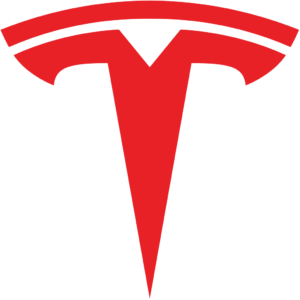New Tony Seba material ….. Evidence of disruption acceleration ….. Tesla’s growing energy business
The disruption of the traditional transportation, oil and gas, and energy industries is in full swing and gaining velocity. Here are some great examples.
**** Tony Seba’s 2014 book Clean Disruption first pointed out that a solar farm 30 miles square (or of 900 square miles) could power an all-electric US vehicle fleet to drive the 3 trillion miles per year that Americans drive. As solar efficiencies have improved since then, the area of solar panels required has decreased somewhat.
A recent Evannex article highlights Elon Musk saying that our sun can provide all the energy the world needs, echoing Tony Seba’s 2014 information as well as my thoughts on fusion reactors I wrote last spring. Musk said in 2019 that a solar farm 100 miles square could power the entire USA. In the article a spokesperson for the University of Tennessee puts these items in perspective by saying: “If all the sunlight striking the Earth’s surface in Texas alone could be converted to electricity, it would be up to 300 times the total power output of all the power plants in the world”.
This information is reinforced by the latest Tony Seba and Adam Dorr “Rethinking Energy 2020-2030 Disruption Report” from RethinkX. This 62 page report is available free from RethinkX.com. It also is paired with a superb 10.5 minute YouTube video of the same title dated August 26, 2020.
Key to this economic disruption across the above three industries – and many more – is the continuous exponentially falling cost of technology in solar, wind, and batteries. Some highlights:
- The Seba/Dorr report points out that the cost of solar energy has dropped 82% from 2010 to 2020, and will drop another 72% through 2030!
- The cost of wind energy has dropped 46% from 2020 to 2020, and will drop another 43% through 2030!
- Similarly, the cost of lithium-ion batteries and battery storage has dropped 87% from 2010 to 2020, and will drop another 80% through 2030!
- The drop of these three items over the 20 year period is 20X, 3X, and 45X, respectively. Incidentally, Tesla’s Battery Day announcements provide ample evidence of how battery costs will continue to drop.
- Over the next decade, solar photovoltaic energy capital costs will drop at an average annual rate of 12%, wind power 5.5%, and battery energy storage 15%.
It the US is willing to spend $2 Trillion over the next decade, it could easily bring the cost of electricity down to about 1.5 to 3 cents per KWh in sunny regions such as Texas and California, and to about 4 to 6.1 cents per KWh in New England. The same results could be achieved almost anywhere around the globe.
These brief summary numbers only scratch the surface of RethinkX’s latest report, and I urge you to at a minimum watch the video cited above. The report that can be downloaded for free is loaded with beautiful charts and graphs and wisdom. The report’s conclusion is that it is possible to generate 100% of our US electricity with solar, wind, and battery technology, and that we could do it by 2030 of we act now. Even if we delay a bit, that only affects the cost of doing so by some 20% to 30% as the cost of each of these technologies continues to decline over the decade.
The disruption caused by these technological advances will virtually wipe out today’s oil and gas industries, power generation industries (coal – going fast now, natural gas, nuclear), and threaten the existence of all transportation vehicle manufacturers that cannot make the change to electric vehicle power in the next five years. Conversely, this disruption opens up huge business and job opportunities as essentially free energy reconstitutes the entire business world and our social fabric.
**** We see increasing evidence that the pace of the transformation toward a clean environment spearheaded by the move to electric vehicles is gaining momentum. Whether we are talking countries, US states, or cities around the globe, the move is on. Here are some examples.
- Japan recently established a target of becoming carbon neutral by 2050. Yes, that is a laughably slow pace, but it is a step in the right direction. As with some many other recent examples, once organizations that set such lengthy goals make a serious start and see the many benefits of such programs, timetables often get shortened. This is especially true when the negative consequences of global warming and environmental pollution continue to accelerate and affect global economies everywhere.
- Just today, not to be outdone by Japan, South Korea also announced its intentions to be carbon neutral by 2050.
- Nine countries have announced their intentions to ban the sale of new gasoline powered cars by approximately 2035, including China, the UK, France, Germany, The Netherlands, Norway, Sweden, and Ireland
- On September 23, 2020 California enacted a law that banned the sale of new gasoline engine vehicles starting in 2035.
- On October 22, 2020 New Jersey stated its intent to follow California’s lead and ban the sale of new gasoline-powered cars. It has already required that all state owned vehicles be electrically powered by 2035.
- Hawaii and Washington state intend to cut off the sales of new gasoline-powered cars by 2030. Nevada is said to be considering California’s lead in this matter too.
- Many cities in the US and around the globe are beginning to close down streets in congested areas to either all automobiles, or ICE-powered ones.
These movements above will increase the momentum of such changes. More countries and states will get on board soon, and timetables will be shortened as political pressure to clean up our environment will grow. Ironically, it took the current COVID-19 pandemic and area lockdowns to show many citizens the daily price we pay for our polluting ICE traffic. The lockdowns left many cities with clear skies for the first time in decades. Sweet!
**** As I pointed out recently, Tesla’s solar energy and battery storage business was way up in Q3 and shows no sign of its growth slowing.
On October 27, 2020 Tesla announced its new program for energy sales and demand smoothing in the UK, in partnership with Octopus Energy. The idea is for homeowners to buy Tesla’s solar roof (panels or shingles) and one or more Powerpacks for energy storage. Tesla will wire homes together in a virtual power plant (VPP) as it has done in many other places in the world. Recently, I wrote about such a VPP in Vermont where Tesla is partnering with Green Mountain Power. Tesla will use its Autobidder software to manage people’s home energy, selling the energy back into the grid when consumer demand is high and storing excess energy from the grid when consumer demand is low. Annual pricing looks to be about a 45% to 55% savings (or more says Tesla!) versus conventional UK electricity suppliers. Of course, that’s after the capital outlay for the solar roof equipment and the Powerpack(s). This effort in the UK mirrors Tesla’s efforts and fine results in Australia, and clearly is a model for Tesla’s forthcoming disruption of electricity suppliers in many other countries.
Following up on comments Tesla made in its Battery Day presentation, Tesla’s Director of Engineering and Construction for Energy Projects Michael Snyder reported that Tesla now has over 120 active energy microgrids such as the Green Mountain Power one above throughout the world. Tesla’s energy storage business is sold out through 2021 and well into 2022, constrained by Tesla’s inability to keep up with customer demand and produce the batteries required for its microgrid storage products such as Powerpacks and Megapacks. Such backlogs indicate sunny days ahead for Tesla and its investors!
Image courtesy of Pixabay
Your feedback in the form of comments or suggestions are welcome in the comment window. Thank you for following my blogs on this site and for participating in my blogging community.




